Best Board games with cute animal themes and chunky mechanics!
Updated: 15/11/2024 – Two new entries added
Animals have always made for a popular theme in board games, but did you know that not every game about animals is designed for younger players? Whilst some certainly are, some of the most complex and thoughtful games out there are actually based on cute, loveable critters.
In this guide, we’ll continue the work we started in our Top 14 Dungeon Crawlers article in order to bring you a list of the best animal themed games — but this time, I’m going to rank them in order of complexity, beginning with the simplest and leading up to a couple that could even give Albert Einstein brain burn!
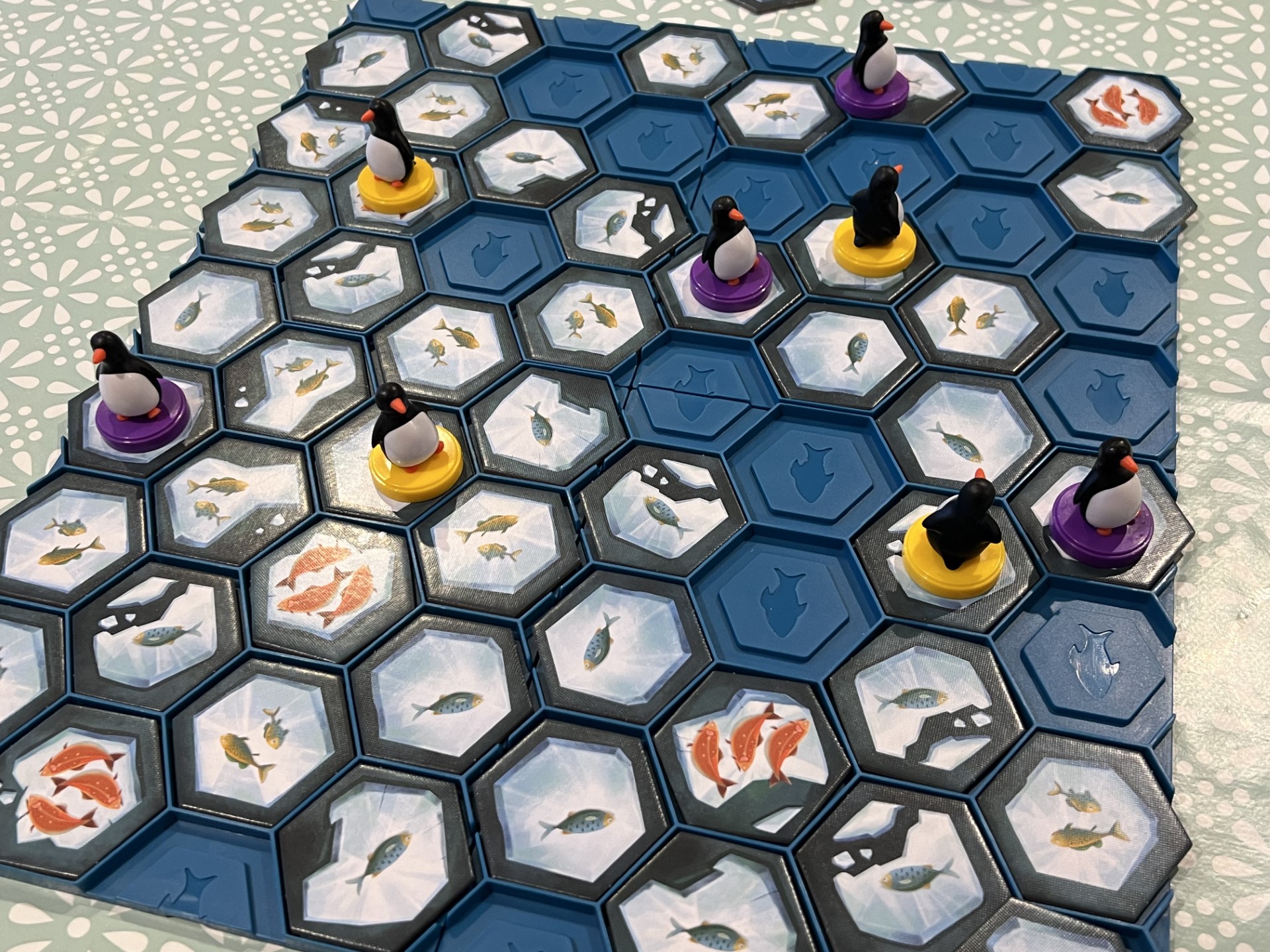
Hey, That’s My Fish! Is arguably the simplest game I’ve ever played, with each player taking just one action per turn, which must be to move one of their penguins. When the penguin reaches its destination, the player will pick up the ice floe tile on which the penguin started (not where it began) and the fish shown on it will be added to their stash.
Whoever has the most fish at the end of the game will win, but collecting fish is only part of the story — the real game here is found in blocking off sections of the map from the other players so that you can potentially claim the whole lot yourself. Any penguin that can’t move will simply claim the tile it is on and then be removed from the game, and if one player is left to mop up a huge swathe of the fish tiles, then so be it!
We play Hey, That’s My Fish! with the whole family — including kids from ages three years and upwards. The rules are simple enough to explain to very young children, and whilst some of the nuances of play will be lost on them, they can still participate. For older players, Hey, That’s My Fish! often becomes a pretty intense experience – especially when played head to head.
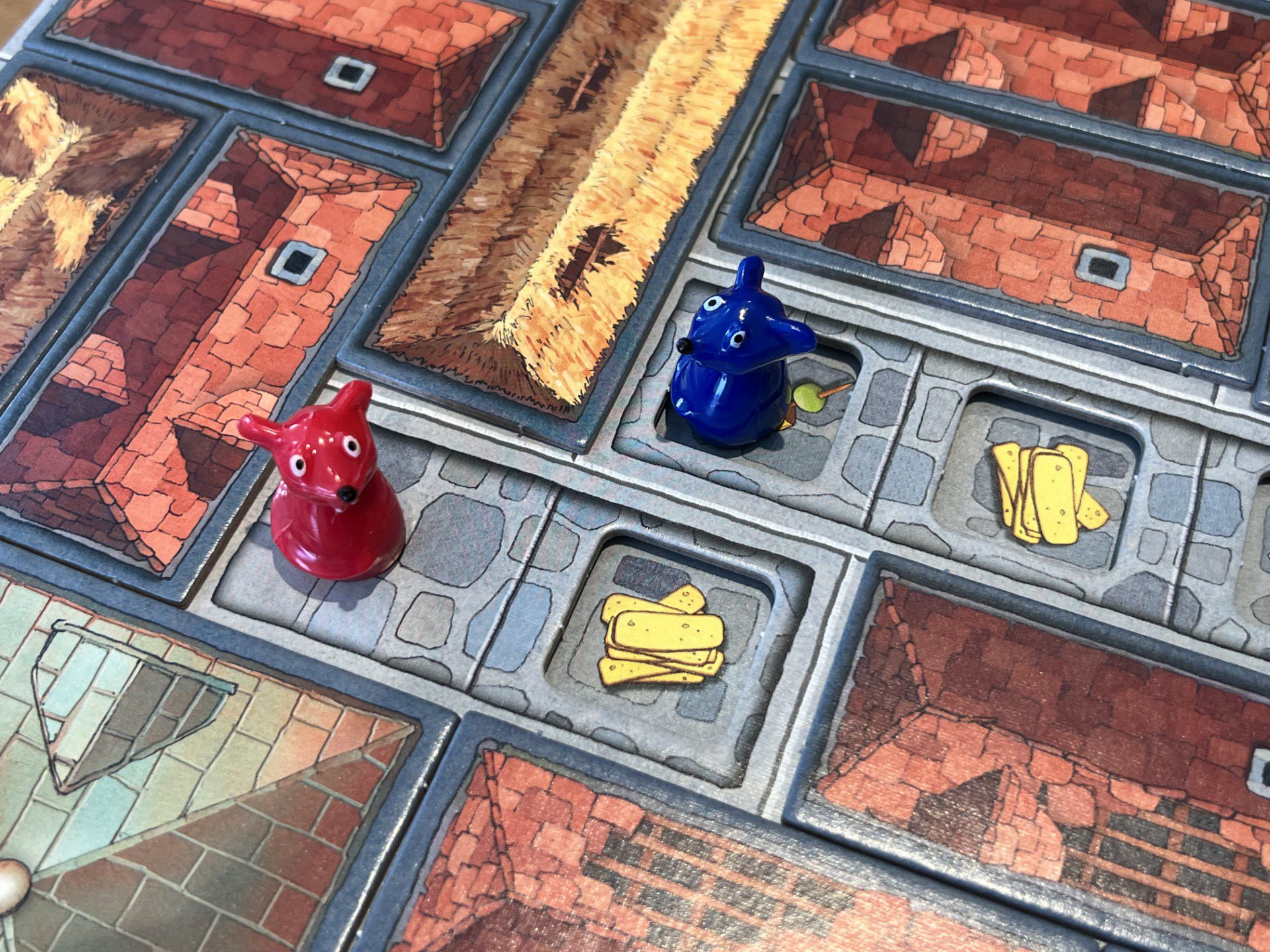
In Chateau Roquefort, each player controls coloured mice and tries to collect as much cheese as possible. On their turn, players spend their actions to put new mice into play, reveal corridors in the castle, move their mice around, or push a tile into play. This changes the maze of cheese pieces underneath and can reveal traps, pitfalls and other obstacles.
Only if a player is able to manipulate the corridors and move their mice so that two mice are standing on two cheese pieces of the same colour will that player be able to claim a cheese piece of that kind. The first player to have four pieces of cheese will win the game.
What makes Chateau Roquefort fun is how tactile it is. With a box and insert that play a fundamental role in gameplay, there is a physical aspect to Chateau Roquefort that you don’t often see, and whilst this isn’t quite Mousetrap levels of fun, it really does add to the experience. There is some fiddliness to Chateau Roquefort and it isn’t the cleverest game ever, but for young players and lots of laughs, it’s a winner.

Aqua: Biodiversity in the Oceans
You can read our recent review of Aqua: Biodiversity in the Oceans here, but to cut to the chase, this is one of my favourite tile-placement games of the moment. Players draft a single tile each turn and then add it to their ecosystem, matching rhomboid shapes of the same colour with the hope of making a perfect hexagon — onto which an animal of the same colour will be placed.
As the ecosystem builds out and more animals are added, players will score for those “small” animals, but depending on how these animals are grouped together, a large animal may then be placed on top of the smaller ones — scoring both for the small and large animals. A further set of randomised endgame scoring tiles adds more spice, and the fact that there are 24 of these which can be randomised makes for a ton of replayability.
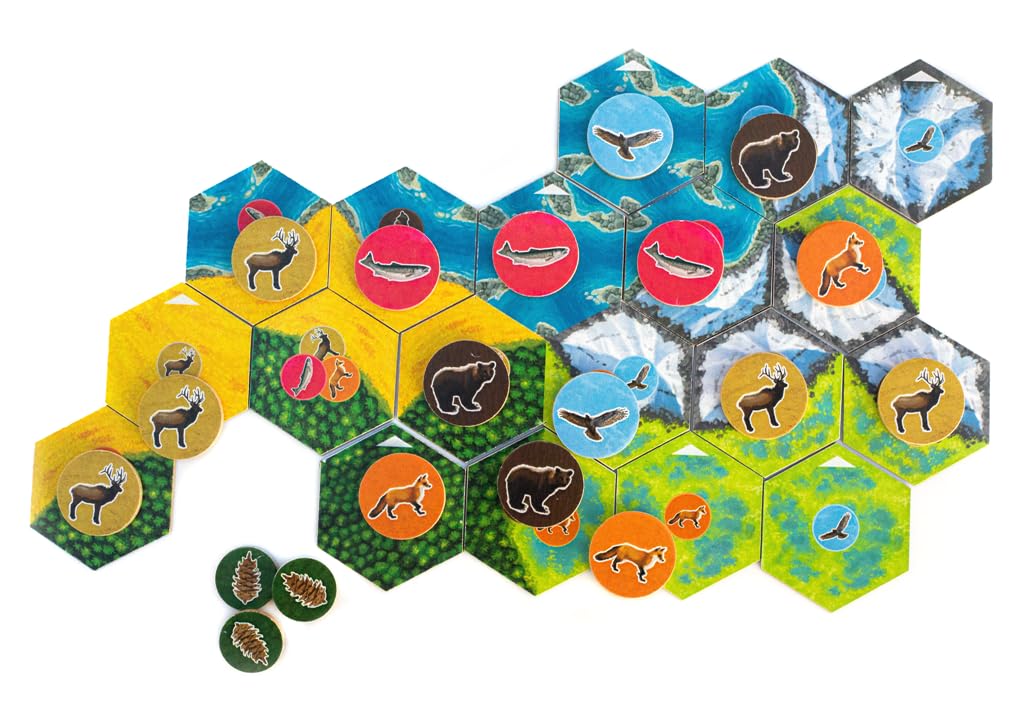
Cascadia (with Landmarks expansion)
Widely regarded as one of the best abstract strategy games of recent years, 2021’s Cascadia is a masterpiece of simplicity. On their turn, players simply choose a pair of one habitat tile and one animal token, and then add both to their tableau in whatever way suits them. The habitat tiles score additional points for expanding existing ecosystems, and each tile shows one or more animals who might live there – the animal token is placed on either the new tile or any existing one, where the animal matches the habitat.
What makes Cascadia so clever is the scoring, which is set by five sets of cards labelled A to E. Each set contains scoring criteria for the five animals in the game – bears, salmon, elk, foxes and eagles – and by placing animals in accordance with the requirements of the card, you’ll set yourself up for a big end game score. The different sets of cards add surprising amounts of variety without ever confusing the core mechanic, and Cascadia is simply a joy to play.
Adding to the base game and expanding upon it is 2023’s Cascadia Landmarks. This expansion adds support for five or six players and features loads more tiles and animals. Additionally, Cascadia Landmarks adds the titular landmarks – small tokens that can be added to habitats once they reach a certain size. Taking a landmark allows the player to choose a special scoring card to add even more options. Finally, Cascadia Landmarks adds scoring cards F to H, meaning that it offers several modules for players at all counts.
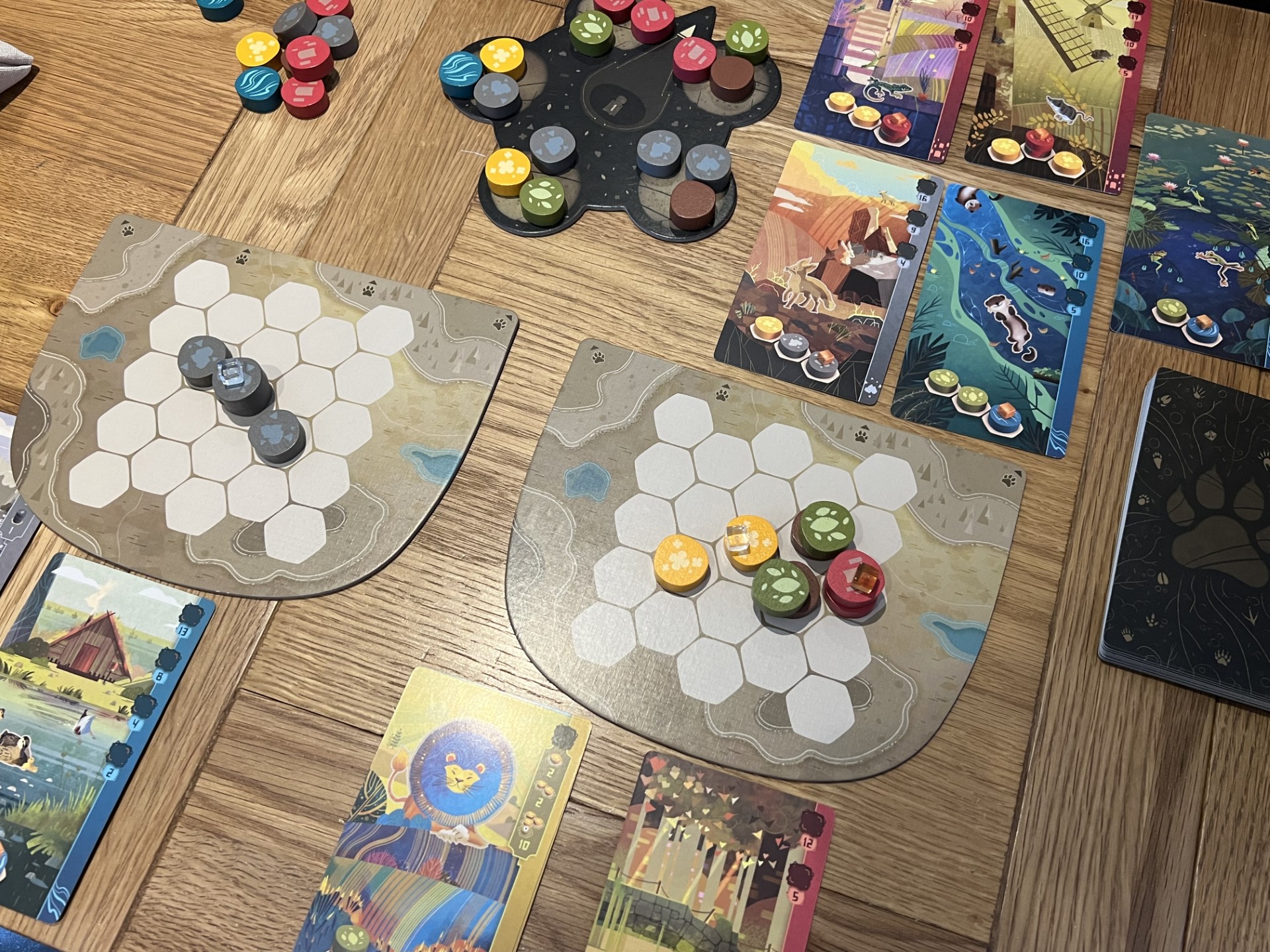
Harmonies
Coming out of absolutely nowhere to become a surprise hit, Harmonies is another abstract placement game about putting animals in their correct habitats. The fact that it is both a physical release and available on BoardGameArena.com means that it is easy to learn and play virtually, but unbelievably lovely and tactile to play in person.
Simply put, Harmonies has players choosing groups of habitat tokens and then animal cards. The aim of the game is to place your habitat tokens in such a way that they can support the animals shown on the cards. Some animals have simple requirements – like water and grass next to each other – and these are relatively easy to fulfil. Others are much more complex, and can even require that habitat tokens be placed two or three stacks levels high.
Harmonies is intuitive to learn and teach, fast to play and gives a real “just one more game” feel, especially when played between a small group of say two or three players. The animal cards feature really nice artwork, and as I mentioned earlier, the game itself is very tactile. Placing the habitat pieces and watching your board grow gives a lovely warm feeling and creates excellent table presence.
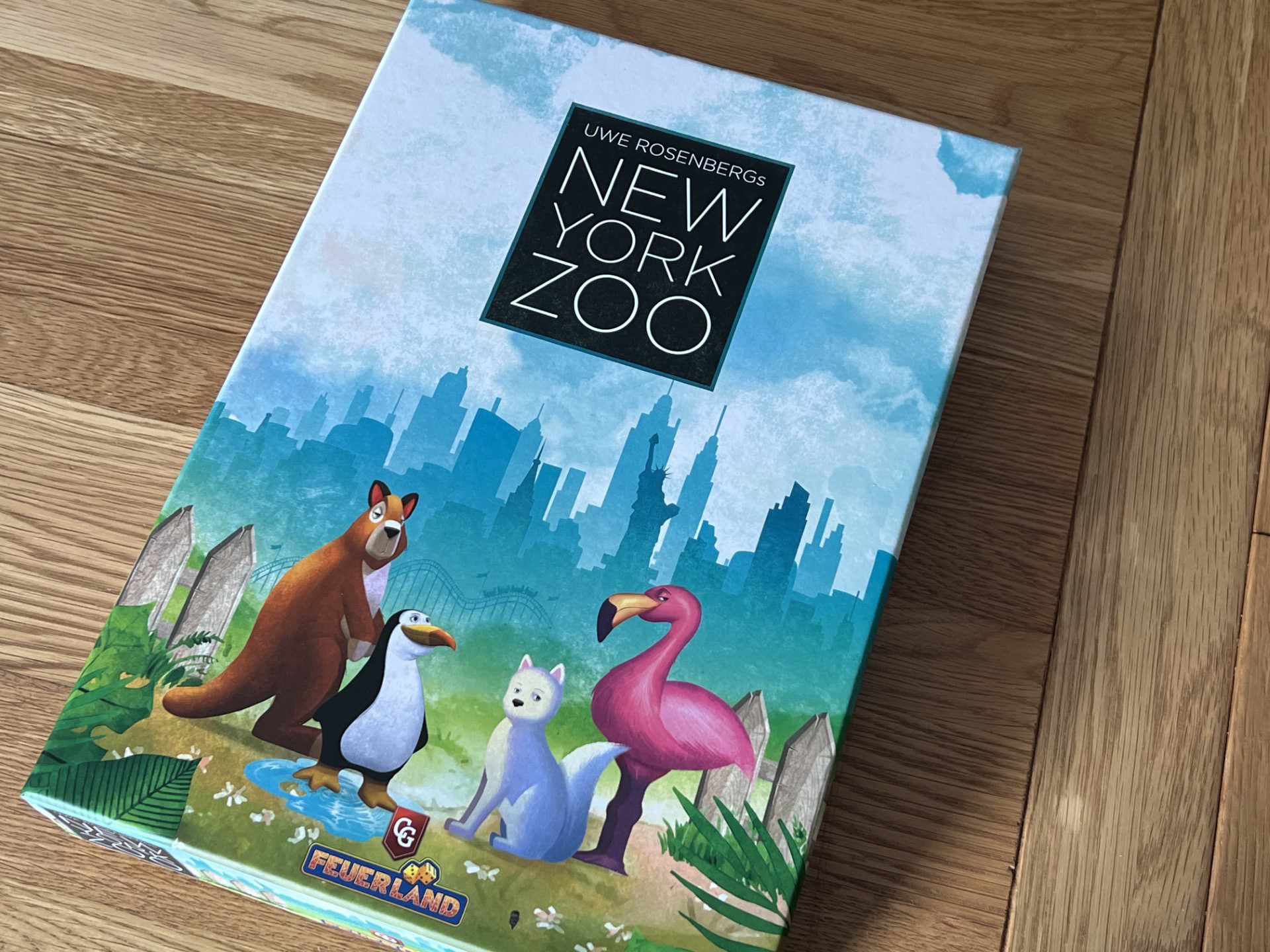
Famous for his straightforward tile-placement games, Uwe Rosenberg is a legendary designer that has without doubt cemented his place in board game history. New York Zoo takes classic Rosenberg mechanics such as a simple tile selection mechanism (in this case via movement around numerous stacks of tiles) and a simple point scoring overlay — represented here by animal selection and placement.
New York Zoo isn’t complex to learn or play, and it has a natural flow that makes it quick to stick in the mind. On a turn, players will either choose a new animal enclosure or take up to two animals as determined by the space they choose. Animals can only go in enclosures with other identical animals, and so sometimes you’ll be choosing between picking a great enclosure or choosing two animals that you really need.
New York Zoo looks absolutely fantastic and has wonderful wooden animal components and bright colours that will charm any player. Best played at two or three players and ideally with the same group (because familiarity leads to deeper strategy), New York Zoo is a fairly light, absolutely gorgeous game that has real cuteness and very solid gameplay.
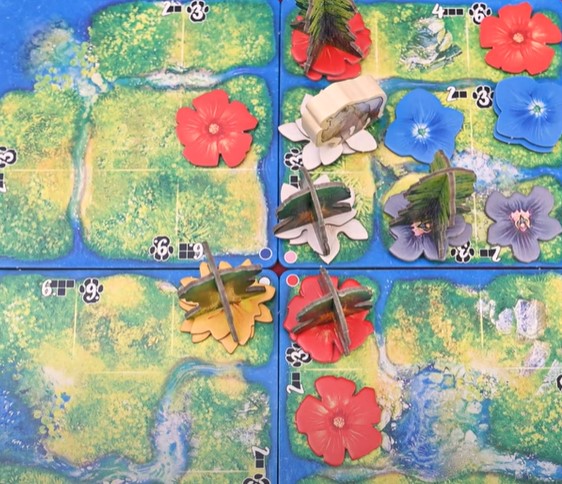
Hutan: Life in the Rainforest
In Hutan the players will compete to create the most amazing rainforest ecosystem. The word “Hutan” literally translates as forest in Indonesian, and that’s the setting for this beautiful game. Designed by the popular duo of Asger Harding Granerud and Daniel Skjold Pedersen (also responsible for HEAT and Flamme Rouge) with artwork from legendary artist Vincent Dutrait, Hutan uses simple mechanics and exceptional components to create real table presence.
Hutan generally resolves around the selection of specific cards that are then used to place flowers of four colours onto the player boards. When a particular section of the board is full of flowers, trees spring up – metaphorically demonstrating the way in which forest ecosystems are reliant on everything from the ground up to the canopy. To further reinforce this point, complete ecosystems also attract native animals like the orangutan or jaguar.
Hutan works because it has simple, easy to learn and teach mechanics that attract players of all ages, whilst also offering impactful decisions. It looks absolutely incredible (like the other game from The OP on this list, Aqua) and as with most games from this design team, the gameplay is really smooth and competitive. Overall, a really good game and a strong contender for one of the best all rounders on the list.
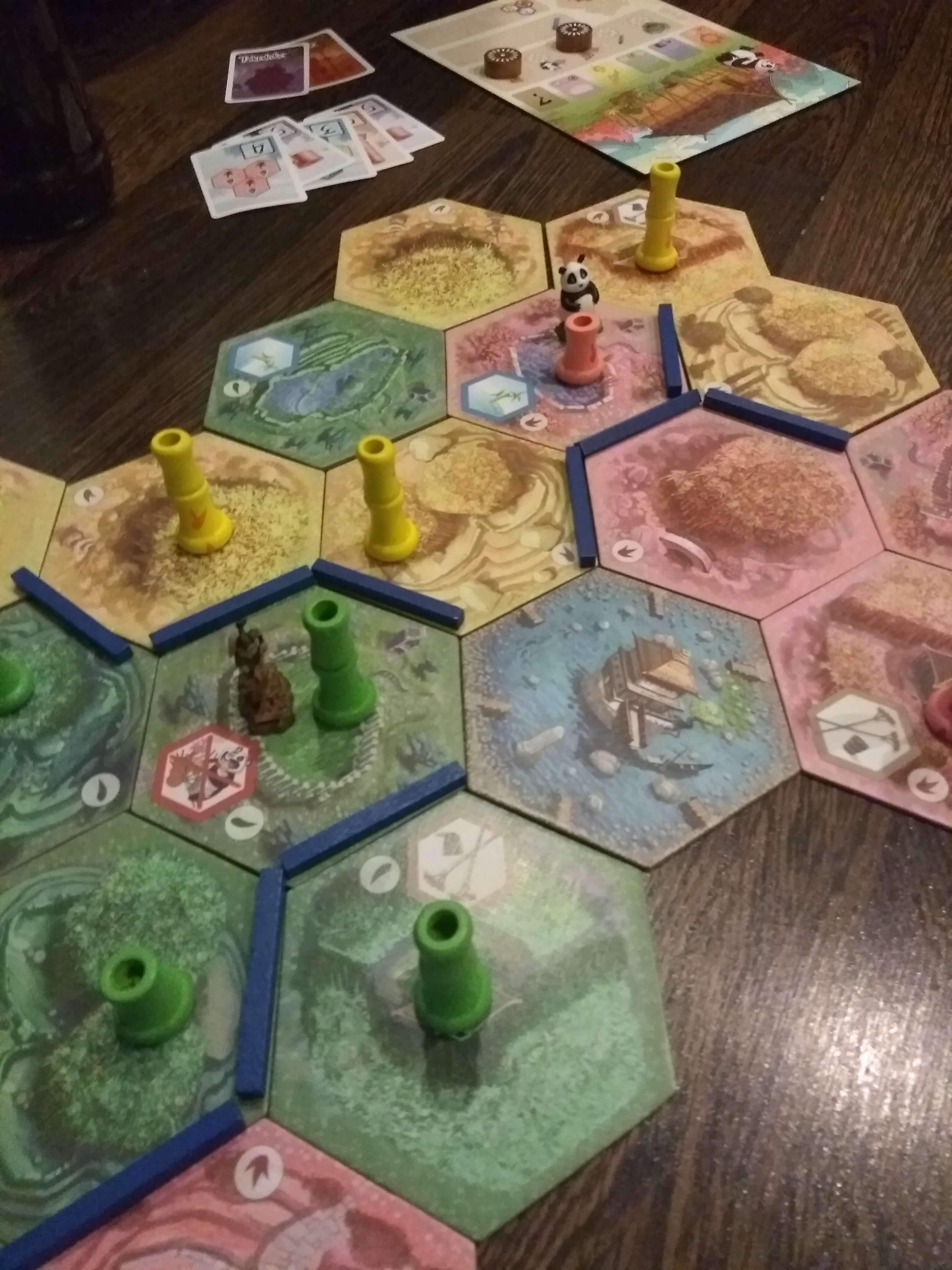
Whilst still relatively straightforward, Takenoko offers a significant step up in complexity from Hey, That’s My Fish! and New York Zoo, and definitely isn’t a game for three-year-olds — even though the theme here is extremely cute and kid-friendly. The aim of the game here is to manage the demands of both a shared gardener and the resident panda, as the two compete to (respectively) cultivate and then devour bamboo of three different varieties.
We reviewed Takenoko in full a few years ago, and as Jupiter said in her write up, this is a well made, fun game that attracts people to it whenever it is presented as an option. The very cute and soft theme hides a somewhat complex game in terms of learning and teaching, but once you have spent a few hours with it and gone through a game or two, things do start to click and become second nature.

Parks
In Parks, the players imagine themselves as hikers who will visit beautiful forests and mountain ranges in order to make incredible memories of vistas, animals and the other wonders of nature. The game takes place over a series of seasonal hikes, with each player controlling two hikers and using them strategically to collect different resource tokens that represent what they see along the way.
The game takes place over four separate hikes (one for each season) and the board is made up of several tiles that are shuffled and placed to represent the path. This ensures that resources are randomised, and with limits on how many hikers can occupy a space (unless they use a campfire) there is both strategic and tactical gameplay to consider.
Players ultimately spend their resources on different cards that represent actual national parks, and one of Parks most popular features is the beautiful artwork it uses. With an expansion (Nightfall) already available, Parks offers a lot of content, lightish to midweight gameplay and artwork that prompts discussion around the table every game.

Once upon time, Everdell was in my top five games of all time, and whilst it may have slipped a little, this incredibly cute, animal-themed engine-building and worker placement game is still absolutely fantastic. Now expanded with several large additional modules and even a huge collectors edition big box, there’s more content here than you’ll ever need.
Everdell may look cute, but the complex, highly mathematical scoring makes it a complex game. For younger players. Thankfully, there’s also a younger version (My ‘lil Everdell) which we also reviewed, and which I can tell you for sure has been well tested on players around the age of four to five.
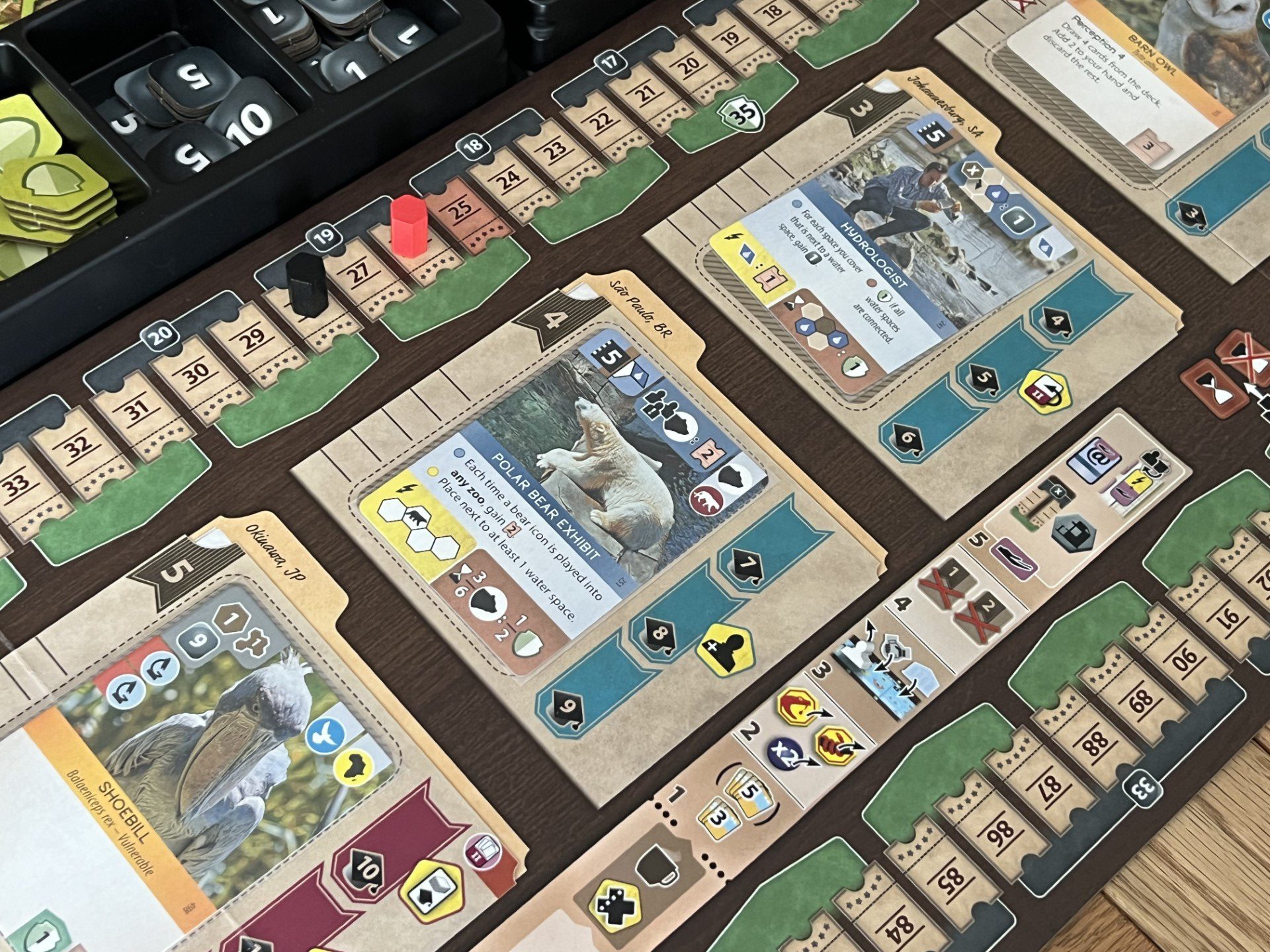
If I only counted digital games, then Ark Nova is probably my most played game of recent years — with around 100 plays on BoardGameArena. There’s no doubt that Ark Nova is at the higher end of the complexity range, with medium to heavyweight eurogame mechanics built around variable-strength actions driven by five upgradeable cards.
In Ark Nova you’ll build enclosures, add animals, play sponsor cards to strengthen your income or add other benefits, and then you’ll expand your contacts through associations with universities or zoos in other countries. Scoring comes from both the appeal of your zoo and the amount of conservation points you have — with the game end being triggered when these two measures (which begin at opposite ends of the same track) cross over.
An excellent game for exactly two players and a very good one for three or four, Ark Nova has rapidly climbed the ranks of BoardGameGeek to where it currently sits at the rank of four — making it undisputedly one of the finest games ever made. With real pictures of iconic animals and a proper “Zoo Tycoon” feel, Ark Nova is a truly remarkable game.
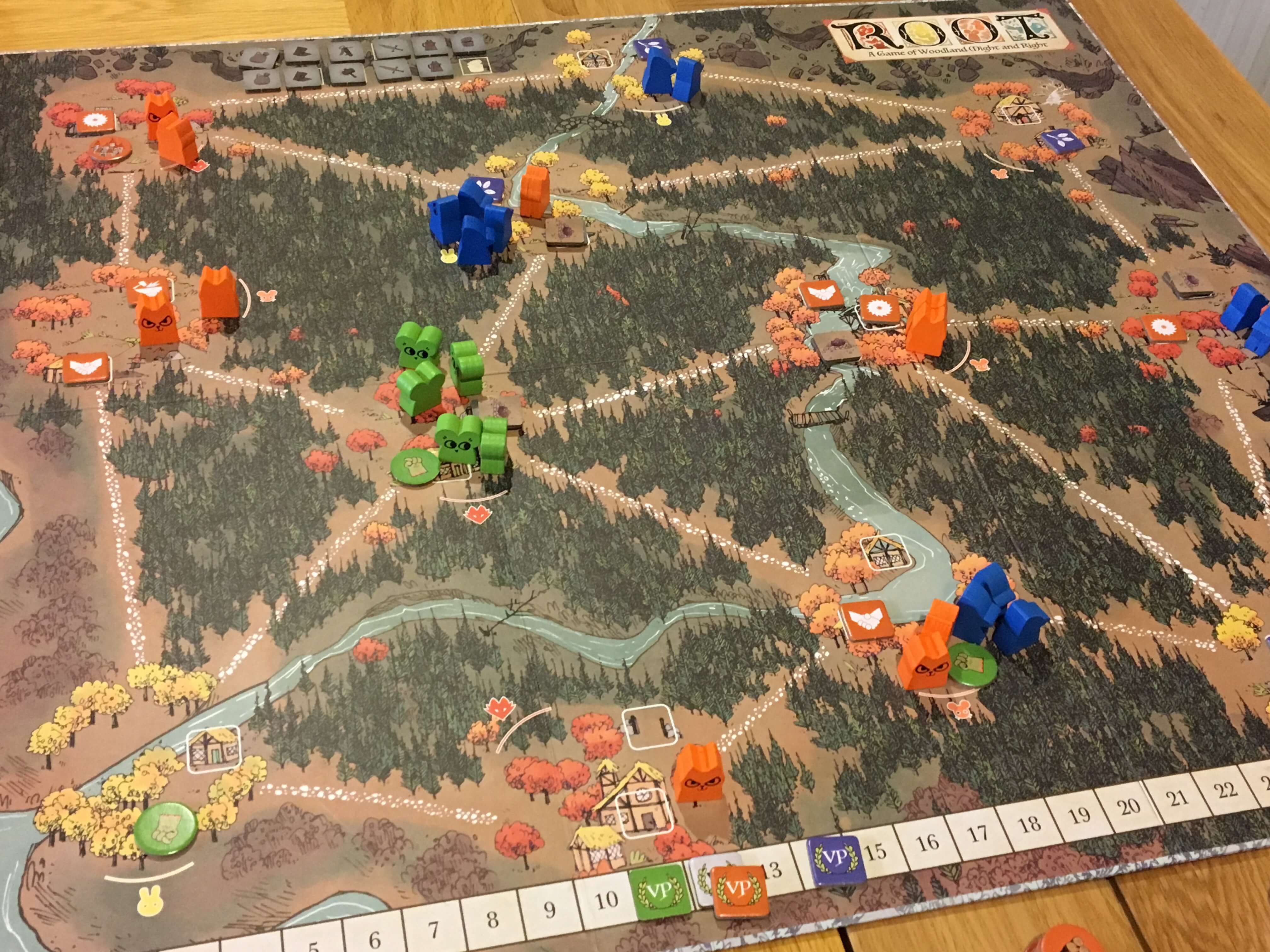
Although it is now almost six years old, Root remains a pretty fresh experience since it is not a game that you can simply play one game after another of, and because each faction (including those in several expansions) plays like a completely standalone game. We reviewed Root in full here, and it also ranked in my Top Ten Games of 2018.
Without doubt, Root is quite the enigma — it’s a very complex game that is more akin to a wargame than a modern board game. Players each control a race of woodland folk — including the birds of the Eyrie, or the powerful Cat Dynasty — and their win condition will vary based on their own faction. This makes Root a nightmare to teach to more than one new player, but a very rewarding experience for those who stick with it.
Comments are closed.